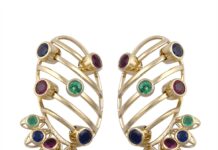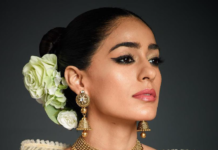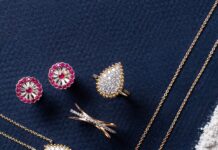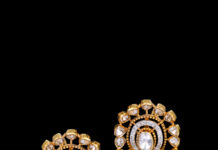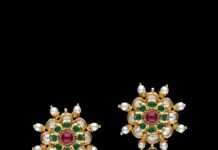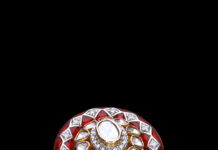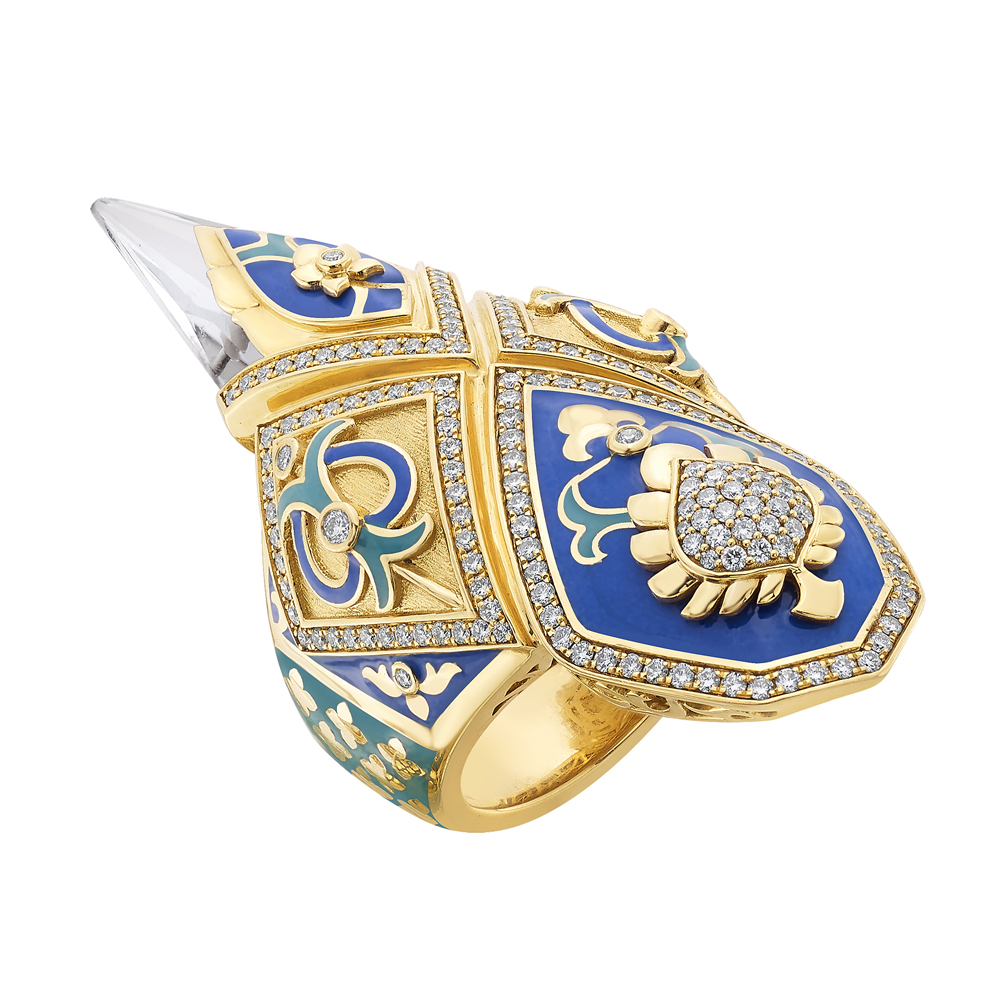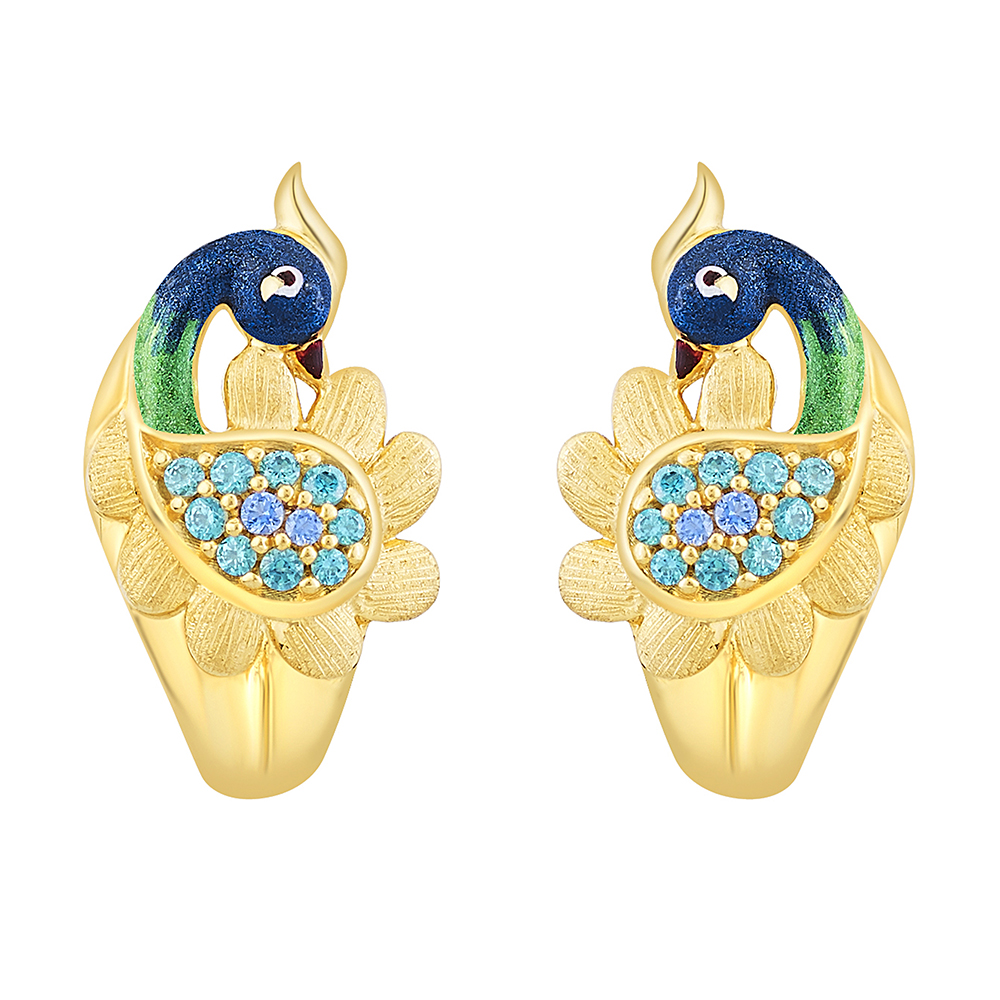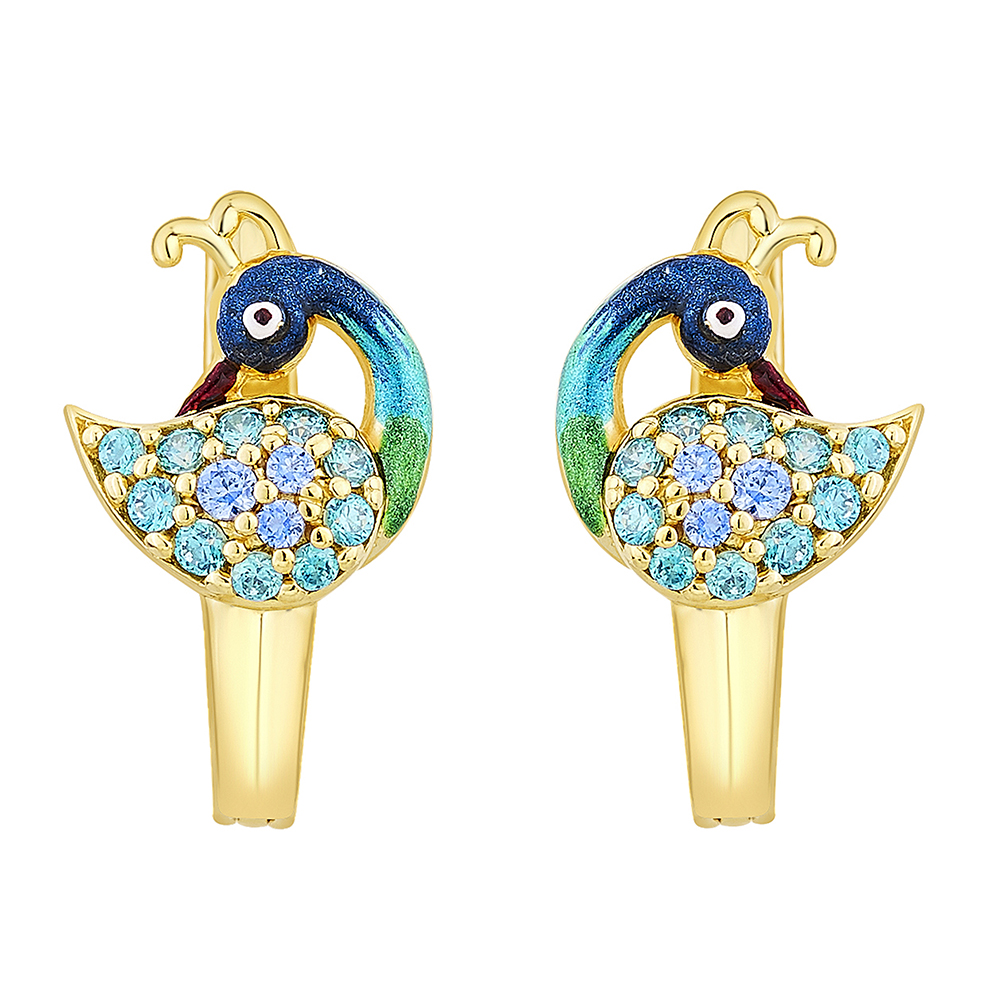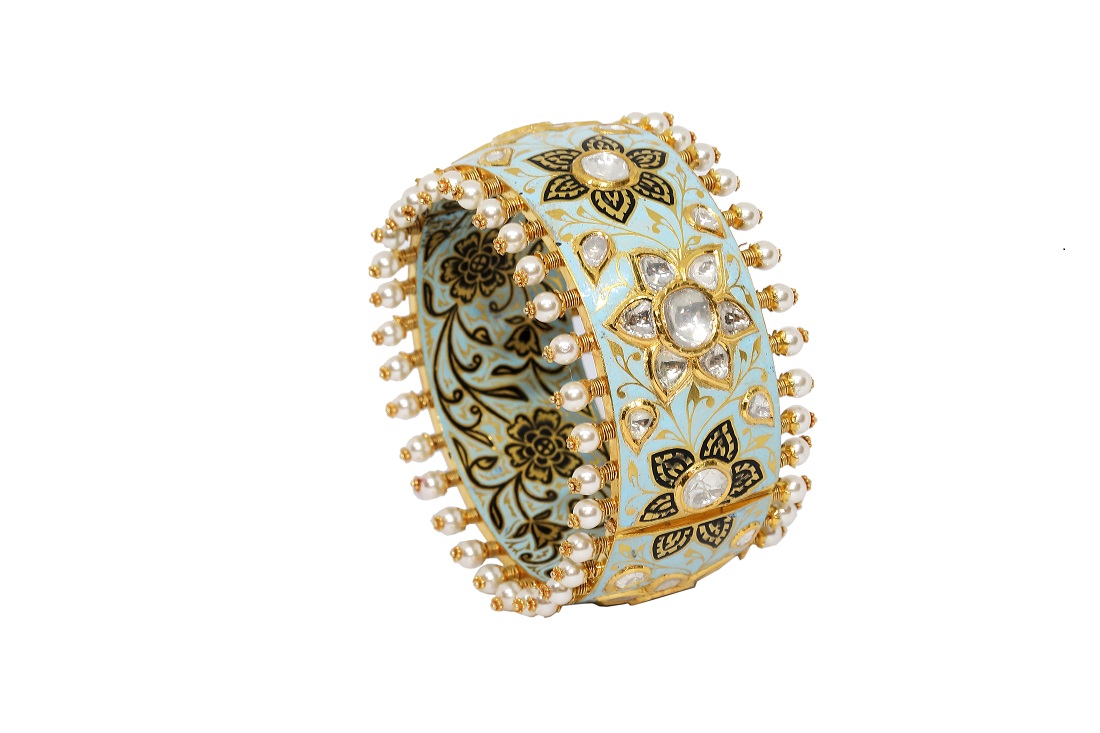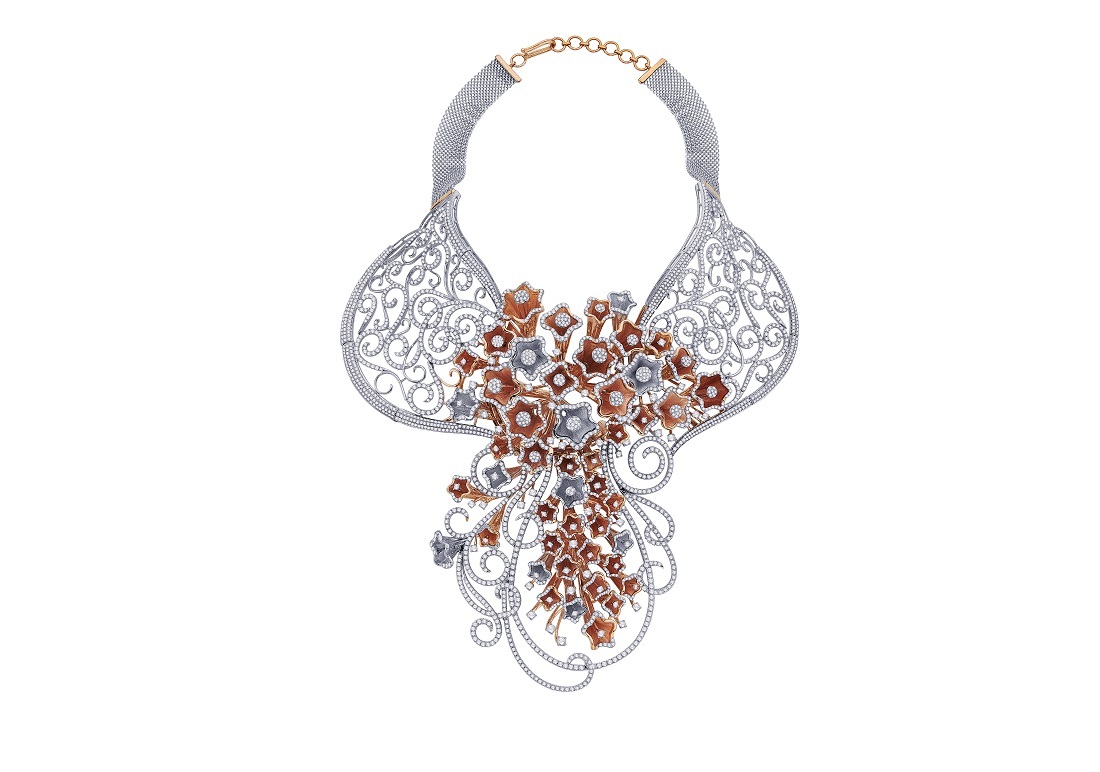Rajasthan is one of the top tourist spots for people visiting India. And anyone who comes here wants to take a piece of this culturally rich place with them and in this pursuit, Meenakari jewellery designs have been one of the most sought-after souvenirs by the tourists here.
While some appreciate Meenakari in the form of bridal jewellery pieces, others also explore options in décor items like bowls, ashtrays, key chains, vases, spoons, figurines, idols, and wall pieces.
What is Meenakari?
Essentially, Meenakari is an art of fusing brilliant colours to carve intricate designs on the metal surface. This technique is used to express various themes and historical events with spectacular clarity.
In the carving of popular designs, animal figurines, or images of gods and goddesses, the enamels are filled to create a picture that is engraved as per a theme. Against the sheen of lustrous metals, the colours pop up beautifully; truly a sight to behold.
Origin and its India connection
Meena is originally Persian art. The feminine form of Minoo in Persian means heaven, referring to the blue colour of heaven. There it was invented by an Iranian craftsman in the Sasanied era but it rose to prominence only after the Mughal invasion.
After that, a French tourist Jean Chardin on his trip to Iran during the Safavid rule referred to an enamel work of Isfahan where he spoke about the pattern of birds and animals on its light blue, green, yellow, and red floral background. However, it was under Mewar’s king Raja Man Singh’s patronisation that Meenakari art flourished across Jaipur during the 16th century and with the influx of craftsmen from Lahore, the city became the hub of the Meenakari art.
Meenakari in today’s time
At present, the Meenakars, who belong to the Sonar or Sohail caste of Kshatriyas and identify themselves as Meenakar or Verma, are the custodians of this art form. It is practically a family craft and rarely, anyone outside of this caste is known to have acquired the knowledge and skill about the technique behind Meenakari jewellery designs.
At present, a wide variety of metals are being used for crafting Meenakari artefacts which include brass, copper, silver, and gold.
Historical highpoint
Traditionally, only gold was used for making Meenakari jewellery. This is because gold holds the enamel better, lasts longer, and looks aesthetically appealing too. However, initially, jewellers did not discover Meenakari as a flaunt-worthy design element. For a very long time, the technique was used just as a backing for Kundan or stone-studded jewellery.
So when the jewellers noticed the trend amongst wearers wherein they reverse the jewellery for the special hidden design behind it, they realised its potential as a jewellery style. Later, even silver too came to be used for creating Meenakari-style artefacts such as boxes, bowls, spoons, and art pieces. Only when the Gold Control Act compelled the Meenakars to look for a material other than gold, Meenakars started exploring copper as well.
Regional spins
Enamelling is practiced in many centres across India wherein each region specialises in its own variation of style and technique.
Lucknow Meenakars are experts of blue and green enamelling on silver, whereas the dusky rose-pink or the Gulabi Meena is Benaras’ forte. Although Meenakari is practiced in Kangra, Kashmir, and Bhawalpur too, Jaipur (Rajasthan) and Delhi continue to be the hub of Meenakari.
Types of Meenakari
There are mainly two types of Meenakari art. One is ‘Ek Rang Khula’ while the other is ‘Panchrangi Meena’. In Ek Rang Khula enamel, a single colour – from mute and white pastels to fancy ones, is used, and that allows the wearer to colour-coordinate the jewellery with attires. Panchrangi refers to the use of five colours including white, pale blue, dark blue, red, and dark green.
Experts on the job
Crafting Meenakari jewellery is a time-consuming and complex process. It involves coating grooves or engravings in ornaments with coloured enamels.
Every piece of Meena goes through many expert hands before taking its final form. From the designer (Nakash, Chitera), it moves on to the goldsmith (Sonar, Swarnakar) and then, the engraver etches out the design (Kalamkar, Khodnakar) and the enamelist applies the colour (Meenakar). Post that, the polisher (Ghotnawala, Chiknawala), the stone-setter (Jadia, Kundansaaz), and the stringer (Patua) give finishing touches to the piece.
Sadly, due to a shortage of Meenakars, often a single artisan multi-tasks.
What is enamel (Meena)?
Enamel colours are metal oxides. They are mixed with a tinge of finely powdered glass. In this mixture, the oxide content controls the shade obtained. These enamels are bought either from Amritsar (Punjab), Germany, or France. For instance, the colour yellow is obtained from the chromate of potash, violet from the carbonate of manganese.
Moreover, blue is obtained from cobalt oxide, green from copper oxide, brown from red oxide, and black from manganese, iron, and cobalt.Through a complex mixing process of antinomies of potash, carbonate of zinc, and hydrated iron oxide, white and ivory can also be achieved. However, brilliant red is the most difficult of all colours to obtain.
Process in practice
First Meenakars engrave the surface of the metal with intricate designs with the help of a metal stylus. These engravings are then filled in with colours. Before the enamel is applied, the surface of the metal is carefully cleaned. The colours are then applied as per their level of hardness, beginning with the hardest. In their raw form, these mixtures do not always show their true colours. It emerges only when they are heated in the kiln at about 850 degrees celsius.
After that, Meenakar puts Meena in a furnace where the colours fuse and harden to become part of the metal surface. Then, the piece is gently rubbed with a file. To improve the lustre of colours, the metal surface is also cleaned with a mixture of lemon and tamarind.
So why not buy, wear and experience the effect of Meenakari art on you!
(Written by Deepa Mishra)



